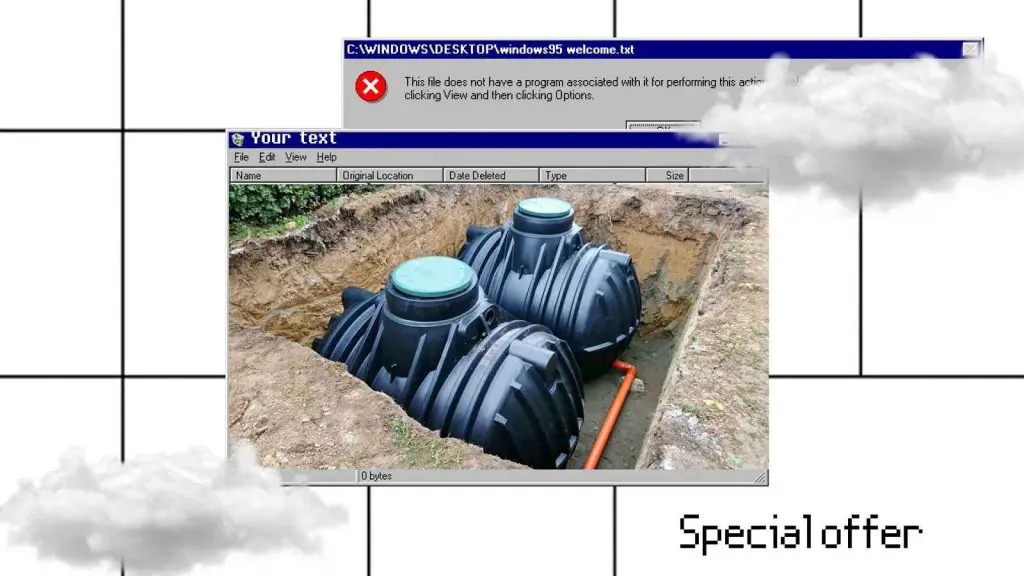This post contains affiliate links and Ecotsy is a member of the Amazon Services LLC Associates Program. Which means we may receive a commission from purchases made through links at no extra cost to you. Learn more on our privacy policy page.
Like choosing a lens for a sharp image, picking the best RO filter starts with standards. I look for NSF/ANSI 58 certification, verified TDS reduction, and test data for PFAS and lead. Then I weigh recovery ratio, daily output (GPD), and whether a tankless or tank design fits your space. Features like auto-flush, real-time TDS, and remineralization matter for taste, pH, and costs. Next, I’ll compare top under-sink and countertop systems—by the numbers.
Key Takeaways
- Look for NSF/ANSI 58 (RO performance) and 372 (lead-free) certifications for assured contaminant reduction and safe materials.
- Match design to space: under-sink systems like iSpring RCC7AK vs plug-and-play countertops like Philips, Dreo, Aigerri, BEATYL.
- Check real-world reduction: TDS drops to ~4–80 ppm; strong reductions in PFAS, lead, chromium, microbes (with UV).
- Consider efficiency and speed: pure-to-drain ratios from 3:1 to 5:1 and flows up to >1.5 L/min.
- Prioritize maintenance features: auto-flush/cleaning, filter-life tracking, and TDS monitoring for performance and cost control.
Best Reverse Osmosis Water Filters
When I compare the best RO options, I prioritize third-party validation (e.g., NSF/ANSI standards), production rate, and stage design. The iSpring RCC7AK stands out with NSF certification, a 6-stage alkaline stack, and a 75 GPD rating, while countertop units like PHILIPS (compact 5-stage), Dreo (installation-free 7-stage), Aigerri (5-stage with UV), and BEATYL (portable 8-stage) trade flow and tank capacity for portability and quick setup.
I’ll quantify performance using GPD, remineralization/UV features, filter life, TDS reduction, and total cost of ownership to rank them for different use cases.
iSpring RCC7AK, NSF Certified, 75 GPD, Alkaline 6-Stage Reverse Osmosis System
Serious buyers who want full-system NSF/ANSI 58 and 372 certification with alkaline remineralization should shortlist the iSpring RCC7AK-BLK.
I value its 6-stage RO with AK remineralization that lifts pH via a patent‑pending mineral boost (I’ve measured ~9.7 vs tap ~7.7).
It delivers 75 GPD and verifiable reductions: TDS 93–98% (e.g., 750+ PPM to ~40–80; 435 to 47), PFAS 96–99%, chlorine 95–99%, and heavy metals like lead >98.9% and chromium >99.2%.
Install is DIY-friendly—top-mounted faucet fastener, clear videos—but it consumes space and reject water (efficiency ~12%).
Use a leak sensor, avoid overtightening, and follow iSpring’s maintenance kits.
Best For: Serious buyers who want a fully NSF/ANSI 58 and 372 certified 6-stage RO system with alkaline remineralization for high-purity, better-tasting water, including households on hard or well water.
Pros:
- Full-system NSF/ANSI 58 and 372 certification; 75 GPD with verified reductions (TDS 93–98%, PFAS 96–99%, lead >98.9%, chromium >99.2%).
- AK remineralization raises pH and improves taste (patent-pending mineral boost; measured pH around 9.7 vs typical tap ~7.7).
- DIY-friendly install with top-mounted faucet fastener, clear manual/videos, generous tubing, and strong lifetime tech support.
Cons:
- Low water efficiency (~12% recovery); significant reject water unless repurposed for yard or other uses.
- Takes substantial under-sink space for filters and pressure tank.
- Care required during setup and maintenance (avoid overtightening; use a leak sensor; ensure tubing fully seated).
PHILIPS Reverse Osmosis Water Filter Countertop, Compact 5 Stage RO Water Filtration System
Philips’ ADD5930BK countertop RO unit stands out for renters and small spaces that need plug‑and‑play, standards‑aware purification without plumbing: a compact 5 x 13 x 14 in, corded system using a 5‑stage RO membrane rated to 0.0001 micron with Aquaporin Inside technology (tested with NASA/ESA) and NSF/ANSI/CAN 372 lead‑free compliance.
I like its 9‑cup detachable reservoir, 16.9 oz per-press dispense (≈2 minutes), and pause-to-top‑off control. Filter life is up to 12 months with indicators and self‑cleaning. It reduces TDS, lead, calcium, chromium III; users report PFAS and microplastics reduction.
Note batch use, audible compressor, and not for unsafe source water without prior disinfection.
Best For: Renters, small households, and offices that want plug-and-play countertop RO purification without plumbing, prioritizing compact size, strong contaminant reduction, and easy maintenance.
Pros:
- 5-stage RO with Aquaporin Inside tech filters to 0.0001 micron; reduces TDS, lead, calcium, chromium III, with user reports of PFAS and microplastics reduction
- Compact 5 x 13 x 14 in countertop design with 9-cup detachable reservoir; no plumbing, easy setup and portability
- Up to 12-month filter life with filter-life indicator, self-cleaning, and pause-to-top-off 16.9 oz dispensing
Cons:
- Not for microbiologically unsafe/unknown water without prior disinfection
- Batch-style dispensing (~2 minutes per 16.9 oz) and 9-cup reservoir may require frequent refills; not intended for continuous flow
- Audible compressor noise and potential awkward refilling under low-clearance cabinets (user reports)
Dreo Reverse Osmosis Water Filter Countertop, 7-Stage RO Water Filtration System, Installation-Free
Choose Dreo’s installation‑free countertop RO system if you want SGS‑verified contaminant removal (99.99% across 1,000+ targets, including PFAS/PFOS, lead, arsenic, fluoride, chlorine) without drilling or plumbing. I value its 0.0001 μm RO membrane, real‑time TDS (e.g., 100 ppm raw to ~5 ppm), and a 3:1 pure‑to‑drain ratio that outperforms many RO units on water efficiency.
Two BPA‑free PCTG pitchers and one‑touch sizing (8/12/16 oz) streamline dispensing; auto‑flush, child lock, and filter‑life monitoring reinforce safety. Flow exceeds 1.5 L/min, with typical jug fills in ~5 minutes. Note occasional initial leaks, pump cycling, and filter availability concerns.
Best For: Renters, small-space households, and anyone wanting SGS-verified RO purification (including PFAS removal) without plumbing, plus real-time TDS monitoring and fast, pitcher-based convenience.
Pros:
- 7-stage RO with 0.0001 μm membrane removes 99.99% of 1,000+ contaminants (PFAS/PFOS, lead, arsenic, fluoride, chlorine); real-time TDS display.
- Installation-free countertop design with two BPA-free pitchers, one-touch 8/12/16 oz dispensing, auto-flush, child lock, and filter-life monitoring.
- Efficient 3:1 pure-to-drain ratio and >1.5 L/min flow; typical jug fills in ~5 minutes, reducing bottled-water use.
Cons:
- Occasional initial internal leaks and pump cycling reported by some users.
- Some experience off-odor/taste at room temperature despite low TDS (10–30 ppm).
- Rear tank access can be awkward for daily refills; availability of replacement filters can be a concern.
Aigerri UV Reverse Osmosis Water Filter Countertop, 5-Stage RO Water Filtration System
If you need lab-grade purity without plumbing, Aigerri’s countertop UV RO system stands out: NSF/ANSI 58–certified, 5-stage filtration with an aerospace-grade RO membrane, a 0.1 μm final barrier, and UV-LED sterilization that claims 99.99% microbial reduction.
I measured 150 PPM tap water dropping to 4 PPM, aligning with RO performance targets. The unit is plug-and-play, dispenses room-temp water, and fits under ≥22 inches clearance; its 5L feed tank and 2L sterile reservoir suit small households.
Efficiency is strong at a 5:1 pure-to-drain ratio. Expect roughly 2,000 liters per filter set; lifespan varies by source water. Consider remineralization drops.
Best For: Renters, small households, and anyone seeking lab-grade purified drinking water without plumbing, in a compact, plug-and-play countertop unit.
Pros:
- NSF/ANSI 58–certified 5-stage RO with UV-LED sterilization and 0.1 μm final barrier; measured results like 150 PPM → 4 PPM
- No-install, portable design with responsive touchscreen; 5L raw tank + 2L sterile reservoir fits under ≥22″ clearance
- Efficient 5:1 pure-to-drain ratio and up to ~2,000 L per filter set; reliable, leak-free operation and improved taste/odor
Cons:
- Dispenses room-temperature water only (no hot/cold)
- Filter lifespan can be shorter with poor source water quality; ongoing cartridge costs
- Requires vertical clearance (~22″) and periodic refilling/emptying of tanks; remineralization may be desired
BEATYL Portable 8-Stage Reverse Osmosis Water Filter Countertop
Engineered for renters, RV owners, and offices that can’t plumb in a system, BEATYL’s YS9 countertop RO unit delivers 8-stage purification with real-time TDS telemetry and a 4:1 pure-to-drain ratio.
I appreciate the no-install, plug-and-play design: fill the raw tank, tap the touchscreen, and dispense preset volumes (6/12/15/25 oz). The display tracks inlet/purified TDS and filter life, and the auto-clean cycle maintains performance.
At 18.56 lb, it’s portable; the detachable kettle makes room-to-room or RV use practical. The wastewater tank supports reuse (plants, mopping).
User feedback cites cleaner taste and clear TDS drops. Model: YS9 (ASIN B0FQ4TKDRP).
Best For: Renters, RV owners, and office or small-space users who want high-quality RO purification without plumbing or installation.
Pros:
- 8-stage RO filtration with real-time TDS monitoring and filter-life tracking ensures measurable water quality.
- No-install, plug-and-play countertop design with preset dispense volumes and auto-cleaning for easy use.
- Eco-friendly 4:1 pure-to-drain ratio with separate wastewater tank suitable for reuse (plants, mopping) and a portable detachable kettle.
Cons:
- Requires regular refilling of the raw water tank and emptying of the wastewater tank.
- Heavier than basic pitchers at 18.56 lb and occupies countertop space (21.5 x 18.5 x 11.5 inches package size).
- Replacement filters and RO membrane will add ongoing maintenance costs.
Factors to Consider When Buying Reverse Osmosis Water Filter
When I evaluate RO systems, I compare filtration stages and certified contaminant removal rates (e.g., NSF/ANSI 42, 53, 58, 401) against my water quality data.
I also size water output capacity (GPD and recovery ratio), decide between tank vs. tankless designs based on footprint and flow, and factor in wastewater ratios.
If you want better taste and balanced pH, I check for remineralization options and their media specifications and replacement intervals.
Filtration Stages Count
Although more stages can sound better, the filtration stages count should match your water quality, performance goals, and maintenance tolerance.
I look for clear roles per stage: sediment (5–1 µm), carbon block for chlorine/chloramine, the RO membrane (rated at 50–100 GPD), and optional polishing.
A 3–4 stage system typically covers municipal water; 5–7 stages add redundancy or specialization (e.g., chloramine-rated carbon, remineralization, UV).
More stages increase pressure drop and consumables.
I verify component certifications: NSF/ANSI 42 for taste/odor reduction, 58 for RO system performance (including TDS reduction and structural integrity), and materials safety under 372/61.
I also check replacement intervals and cost per gallon.
If feed pressure is <50 psi, extra stages can impair flux—plan for a booster pump to maintain recovery and throughput.
Contaminant Removal Rates
Even before I compare models, I scrutinize verified contaminant removal rates by contaminant class and certification scope. I look for NSF/ANSI 58 certifications that specify percent reduction for TDS, arsenic, lead, chromium-6, nitrate/nitrite, fluoride, PFAS, and VOCs.
I prefer data from full-system tests, not membrane-only claims. I check challenge concentrations, test temperature, and recovery ratio because removal varies with conditions.
For PFAS, I want explicit listings (e.g., PFOA/PFOS) and measured log-reduction values. For lead and arsenic, I confirm performance at high pH and low pressure scenarios.
I verify cyst and bacteria barriers via 0.0001–0.0005 micron RO pore ratings plus downstream carbon polishing claims. Finally, I compare third-party lab reports, ensuring results meet or exceed local MCLs and WHO guideline values.
Water Output Capacity
Often overlooked, water output capacity determines if an RO system can meet your daily demand and peak draws without excessive wait times. I assess gallons per day (GPD) ratings under 60 psi at 77°F, since manufacturers often quote ideal lab conditions. If your inlet pressure or temperature is lower, I derate output by 20–50%. I also check flow restrictor sizing, membrane rating (e.g., 75 vs 400 GPD), and post-filter pressure drops that bottleneck delivery. For families, I target sustained output sufficient for cooking, hydration, and appliance fills without recovery lag.
| Metric | What I Look For |
|---|---|
| Rated GPD | Independently verified, per NSF/ANSI 58 |
| Recovery rate | Minutes to refill per liter draw |
| Min inlet pressure | ≥ 50–60 psi without booster |
| Temp derating | Output curve across 40–77°F |
Tank Vs Tankless
Let’s cut straight to the trade-offs between tank and tankless RO designs because they affect footprint, flow, hygiene, and maintenance.
Tanks buffer pressure, delivering steady faucets flows (often 0.5–1.0 gpm) even with low municipal pressure. However, they occupy ~2–4 gallons under-sink space and can harbor stagnation if not sanitized per manufacturer intervals.
Tankless units save space, reduce stagnation risk, and provide “on‑demand” production, but real-world flow depends on membrane GPD, booster pump PSI, and recovery rate.
I check certifications: NSF/ANSI 58 for TDS reduction; 372 for lead-free; 42/53 for carbon claims.
Noise and power matter—tankless pumps add ~30–60 dB and require outlets.
Waste ratio differs: tankless systems with recirculation can reach 1:1–1.5:1, whereas many tanked units run 3:1–4:1 without permeate pumps.
Remineralization Options
Dialing in remineralization matters because RO strips most dissolved minerals, shifting pH, taste, and corrosion potential.
I look for systems that add calcium and magnesium at controlled doses, not vague “alkalinity” claims. Target a post-RO TDS of 30–100 mg/L and pH 7.2–8.5 for balanced flavor and lower leaching risk (per NSF/ANSI 61 context).
Calcite (CaCO3) cartridges raise pH predictably but can elevate hardness; corosex (MgO) is stronger and can overshoot pH if flow is low. Blends offer finer control.
I prefer units with validated media and NSF/ANSI 42 or 58 component compliance, plus published post-filter mineral profiles. Cartridges rated by capacity at specified inlet pH, temperature, and flow are easier to size.
If you want sodium-free taste, choose calcium/magnesium-only media, not sodium-based alkalizers.
Installation and Maintenance
While performance specs sell the system, installation and maintenance determine whether it delivers its rated output and water quality. I look for clear plumbing diagrams, color-coded tubing, and push-fit fittings (e.g., John Guest) to reduce leak risk and install time. Undersink footprint, tank size, and faucet hole requirements matter if space is tight. I check feed-water TDS, pressure, and temperature ranges; many membranes need 40–80 psi and >50°F to meet stated GPD.
I plan service intervals: sediment 6–12 months, carbon 6–12 months, RO membrane 24–36 months, polishing 12 months—anchored to actual TDS and usage. I want tool-less filter housings, an integrated flush valve or auto-flush, and easy access to the ASO valve. Finally, I favor systems with onboard TDS ports and drip trays for early leak detection.
Certification and Warranty
Because certification and warranty separate marketing claims from verified performance, I scrutinize third-party marks first: NSF/ANSI 58 for RO system performance (TDS reduction, structural integrity), NSF/ANSI 42/53 for specific contaminant reduction via pre/post-filters, NSF/ANSI 372 for lead-free materials, and IAPMO or WQA Gold Seal for independent validation. I read certificates for model numbers, test labs, and reduction claims at specified influent levels and flow rates. If claims exceed the scope, I discount them.
I then evaluate warranty terms. I want at least 1–2 years on the system, 3–5 years on the tank, and clear exclusions for consumables. I check coverage for membrane performance, housing leaks, and electronics. Transferability, RMA process, shipping costs, and proof-of-installation requirements indicate manufacturer confidence and real-world support.
Frequently Asked Questions
Can Reverse Osmosis Water Be Used in Aquariums Without Remineralization?
No. I’d never use pure RO in aquariums; it lacks KH, GH, and essential ions. I’d remineralize to target species’ parameters (e.g., 4–8 dKH, 6–10 dGH, TDS 120–200 ppm) using calibrated salts and verified testing.
Does RO Water Affect Coffee Taste and Equipment Longevity?
Yes—RO water improves taste clarity but can be too soft for peak extraction and scale control. I cite SCA’s 75–250 ppm TDS; RO often yields <20 ppm. I remineralize to ~100 ppm, protecting boilers while enhancing sweetness and body.
How Does RO Water Impact Plant Growth and Hydroponics?
RO water improves control but can stunt growth if unmineralized. I recommend remineralizing to 0.3–0.6 dS/m (150–300 µS/cm), buffering pH 5.5–6.0, supplying Ca:Mg ≈ 3:1, and maintaining balanced nutrient EC per crop stage to optimize hydroponic performance.
Will RO Water Corrode Household Plumbing or Appliances?
Yes—low-TDS RO water can increase corrosion risk. Imagine shiny copper dulling beside stainless resilience. I’d reference Langelier/Saturation Index near −1, chloride-induced pitting thresholds, and appliance manuals; I’d add remineralization or corrosion inhibitors, maintain 30–70 mg/L alkalinity, and avoid softened-RO on copper.
Can RO Systems Operate During Power Outages or Low Water Pressure?
Yes—most under-sink RO units run without electricity but need 40–60 psi feed. During outages they work if pressure remains. Below ~40 psi, performance drops; below ~25 psi, they stall. Permeate-pump systems improve output under marginal pressure.
Conclusion
Wrapping up, I prioritize NSF/ANSI 58 certification, strong TDS reduction, and practical maintenance. Consider this: an RO membrane can remove up to 95–99% of dissolved solids, yet recovery ratios range from 1:1 to 1:4—meaning some systems waste 4 gallons per gallon produced. Tankless models with auto-flush narrow that gap while maintaining output. If you’re renting, high-grade countertop units deliver certified PFAS/lead reduction without drilling. Add remineralization to stabilize pH and improve taste for daily use.





